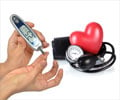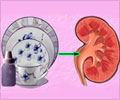Men who have one or two parents with hypertension appear to have a significantly increased risk of developing elevated blood pressure throughout their adult lives.
Researchers at the Johns Hopkins University, Baltimore, have found that men who have one or two parents with hypertension appear to have a significantly increased risk of developing elevated blood pressure throughout their adult lives.
For the study, Nae-Yuh Wang, Ph.D., and colleagues at the Johns Hopkins University assessed hypertension in 1,160 men who first filled out study questionnaires in 1947, when they were medical students.During the same time, these men underwent medical examinations and reported their medical history, health habits and dietary habits.
After 54 years of follow-up, the participants filled annual questionnaires regarding their blood pressure and the diagnosis and treatment of hypertension in themselves and their parents.
When the study began, 264 of the medical students reported at least one parent with hypertension, including 20 with both parents who had hypertension.
After the follow-up, 583 new cases of parental hypertension occurred, so that 701 of the group had at least one parent with high blood pressure and 166 had two.
Participants with one or two parents with hypertension had higher average systolic and diastolic blood pressure at the start of the study and were also at higher risk of developing hypertension at some point during adulthood than those whose parents never developed hypertension.
Advertisement
Early-onset hypertension in both parents was linked to a 6.2-fold higher risk of hypertension at any point in adulthood and a 20-fold higher risk of developing hypertension by age 35.
“They also underscore the importance of primary prevention and blood-pressure monitoring early in life in men with parental hypertension, especially those who have a parent with early-onset hypertension,” they added.
The study is published in the March 24 issue of Archives of Internal Medicine, one of the JAMA/Archives journals.
Source-ANI
SRM/L











